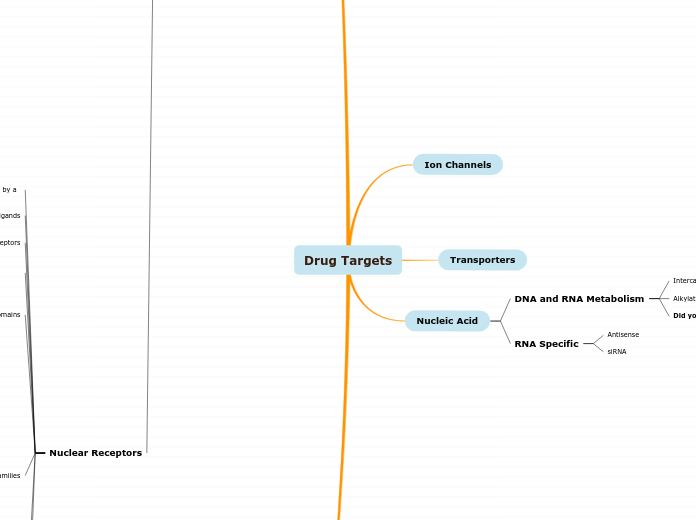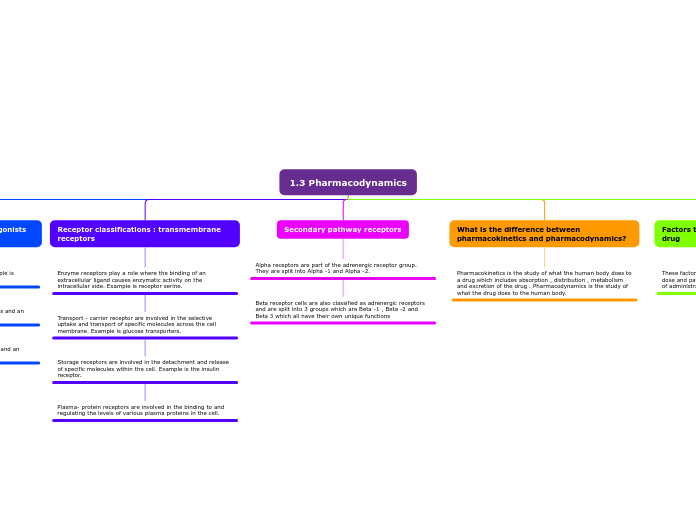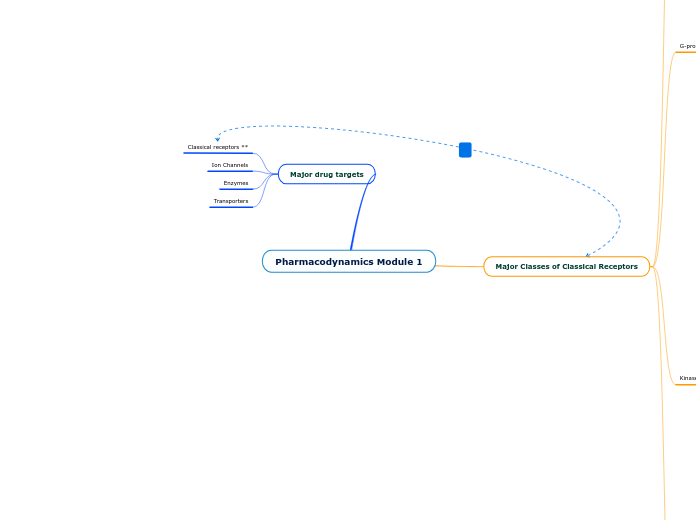Drug Targets
Rivers have always been essential for human life and settlement. A source for drinking, the source of food, and a way to transfer goods from one place to another. They are essential in the environment of rainforest and wetlands.
Enzymes
The Yangtze holds the title of Asia’s longest river. The Yangtze has a momentous place in China’s history and culture, providing some of the country’s most fertile land as well as some of its most artistically inspiring scenery.
Where the Mekong river runs, the land is incredibly verdant shaping one of the richest areas of biodiversity on the planet. Thousands of species call its shores and waters home. Long an essential trade route the Mekong passes through, or close to, some of the region’s most important cities, including Vientiane, Phnom Penh and Saigon.
Classical Receptors
The Volga is the longest river in Europe. The waters of the Volga are used to irrigate the steppe regions of southern Russia. Because of its importance in the country, the Volga has mythological status in Russia, and many iconic sites are found along its banks
The Danube is the second-longest river in Europe. Travelers can experience many of the river's sights by embarking on a cruise along its waterways. Danube River Cruises, which are offered by Viking Cruises, typically stop in Cologne, Budapest, Nuremberg, Belgrade and Krems. Following the river is a way to experience several Eastern European cities in one trip. Famous monuments, such as the Hungarian Parliament, have been erected on its coast.
Nuclear Receptors
ntracellular, translocate to nucleus, act via direct interaction with DNA, monomeric structure with separate receptor and DNA binding domains
Mechanism
often specifically causes dissociation of a co-repressor molecule
allowing the binding of a co-activating protein.
Co-activator proteins and co-repressor proteins also regulate
initiates heterodimerization generally with the retinoid X receptor as a partner.
Ligand binding to cytoplasmic hormone receptors initiates dissociation from the heat shock protein
allows binding to specific DNA sequences called hormone response elements on the target genes
receptor dimers recruit ancillary proteins, co-activators and co-repressors that either promote or suppress gene transcription.
Hybrid Class
thyroid hormone receptor and the vitamin D receptor.
members of the Class II receptors form obligate heterodimers with RXR
Class II
causes the induction of drug metabolizing enzymes such as cytochrome P3A
xenobiotic receptors
fatty acid and cholesterol sensitive receptors
form heterodimers with RXR, the retinoid x receptor.
Nucleus
Class I
other endocrine mediators such as oestrogen, progesterone and androgen.
receptors for steroid hormones
Forming homodimers on ligand binding before translocating to the nucleus
Cytoplasm
Domains
N-terminal region controls interaction of the receptor with co-activator or co-repressor proteins that modulate the transcriptional functions of the nuclear receptor
C-terminal domain bears a region that governs the nuclear localization of the receptor.
Directly interact with DNA and modulate transcription
orphan receptors
RXR receptor (similar to vitamin A receptor)
No defined ligand
Ligands
Many hormones and vitamins, such as vitamin D.
Monomeric with a DNA recognition and binding domain and a ligand binding domain connected by a flexible linking hinge.
Tyrosine kinase-linked receptors
membrane localized, having intrinsic protein kinase activity or directly linking to free protein kinases, a single transmembrane helix linking extracellular domain to intracellular kinase domain
Kinase-linked receptor transduction mechanisms
Jak Stat signalling pathway is common to many cytokines.
activation of the receptor by cytokine binding to the extracellular portion
conformational change in the intracellular portion that allows binding of an independent cytoplasmic kinase
Tyrosine Kinase-linked receptors
Receptor’s intrinsic kinase activity phosphorylates proteins bound to the activated intracellular domains of the receptor.
SH2 domain
Dimerization for both receptor types on ligand binding.
conformational change
Then phosphorylation
Associate with independent cytoplasmic kinase proteins
bacterial lipopolysaccharides
insulin
cytokines
growth factors
Receptors
Cytokine receptors
Associate with cytosolic tyrosine kinases
No integral kinase moieties
Serine/threonine kinases
Transforming growth factor
Receptor Tyrosine Kinases
Toll-like receptors
Growth factors
initiated by ligand binding followed by dimerization of the receptor.
Autophosphorylation of tyrosine residues on the cytoplasmic portion of the receptor
phosphorylated Tyrosine residues bind and activate a variety of intracellular signaling proteins via interaction with regions called SH2 domains
Phospholipases and other protein kinases
Control inflammation, tissue repair, cell cycle progression, apoptosis and immune response.
Large extracellular ligand-binding domain linked to an intracellular domain by a single membrane spanning helix.
Drug shares endogenous ligand binding site
G-Protein-Coupled Receptors
The Danube is located in Central and Eastern Europe.
The Danube flows through 10 countries, more than any other river in the world. Originating in the Black Forest in Germany, the Danube flows southeast for 2,850 km, passing through or bordering Austria, Slovakia, Hungary, Croatia, Serbia, Romania, Bulgaria, Moldova and Ukraine before draining into the Black Sea. The mouth of the Danube is the Danube Delta. The greater part of the Danube Delta lies in Romania, with a small part in Ukraine (Odessa Oblast).
Tributaries :Iller, Lech, Altmühl, Naab, Regen, Isar, Inn, Ilz, Enns, Morava, Rába, Váh, Hron, Ipeľ, Sió, Dráva, Vuka, Tisza, Sava, Tamiš, Great Morava, Mlava, Karaş, Jiu, Iskar, Olt, Osam, Argeș, Ialomița, Siret, Prut.
membrane localized , work via activation of g-protein which translocate to and activate effector ion channel or enzymes, mono or oligomeric, 7 transmembrane helices with intracellular g-protein coupling domain
Desentitization
C-terminal cytoplasmic tail, serine/theonine rich and prone to kinase activity
GPC receptor kinases
PKA, PKC
Endocytosis (receptor internilization)
Receptor phosphorylation
Down regulation
G-protein modulation of effector molecules
One effector controlled by different G-protein complexes
4 Families
G alpha q
G alpha 12
G alpha i
Inhibitory
G alpha s
Stimulating
G-protein activation
GDP occupies a site on the alpha subunit.
GDP is converted to GTP
Signals the release of the activated GTP-bound alpha subunit from both the receptor and the beta and gamma subunits the latter two remaining bound together
alpha subunit is then free to bind a target effector protein.
alpha subunit has intrinsic GTP-ase activity and eventually self hydrolyses GTP to GDP thus inactivating itself
Conformational change to expose high affinity binding sites for the G-protein trimer complex
Freely diffuse around the cytoplasmic surface of the cell membrane and associate with ligand bound receptors.
Alpha, beta and gamma subunits anchored to the membrane by lipid residues
Act as messengers for the receptors coupled to them.
The Danube is the source of drinking water for almost 10 million people?
Search for other interesting facts about this river and add them here.
Olfaction
Opioids
Dopamine
5-HT
ACh
Sub families
This is the place where Danube drains into a larger body of water . Type in the answer.
Metabotropic glutamate/Ca sensor
Smallest group (GABA B receptors)
Secretin/Glucagon
Intermediate EC tail with ligand binding domain
Receptors for peptide hormones (calcitonin)
Rhodopsin
Examples
Amine neurotransmitters, neuropeptides, purines, protanoids, cannabinoids
Ligans bind to helices or extracellular hoops
Short extracellular (EC) tail (N-terminal)
Largest group
g-protein coupled receptor agonists
Remember that this is the original point from which the river flows. Type in the answer.
Rapid effect (neurotransmitters)
Other residues form an extracellular domain at the N-terminal and a cytoplasmic domain at the C-terminal
Single PP of ≤1100 residues which form seven transmembrane α-helices amongst other structures
Danube River flows through 9 countries in Europe. Type them in.
Ligand Gated Ion Channel
The Volga is the longest river in Europe with a catchment area of 1,350,000 square km.
Eleven of the twenty largest cities of Russia, including the capital, Moscow, are located in the Volga's drainage basin. Rising in the Valdai Hills 225 meters above sea level northwest of Moscow and about 320 km southeast of Saint Petersburg, the Volga heads east past Lake Sterzh, Tver, Dubna, Rybinsk, Yaroslavl, Nizhny Novgorod, and Kazan. From there it turns south, flows past Ulyanovsk, Tolyatti, Samara, Saratov, and Volgograd, and discharges into the Caspian Sea.
Tributaries: Kama, Oka, Vetluga, and Sura. The Volga Delta has a length of about 160 kilometers and includes as many as 500 channels and smaller rivers.
membrane localized, ligand binding domain directly coupled to larger channel complex in an oligomeric assembly of subunits surrounding central pore
Extra receptors
ATP and calcium binding receptors
Arachadonic acid sensitive receptors
Receptor activation
This is the place where it drains into a larger body of water - another river, a lake, the sea or the ocean.
Possible desensitization
When channel closes but ligand remains bound
Period of opening varies
Conductance doesn't vary between endogenous or agonist drugs
Very fast response time
No-mediator activation
Neurotransmitters like Act/Glutamate
Anion selective
The source of a river, also called headwaters, is the original point from which the river flows. Type in Volga's source.
Gamma aminobutyric acid receptor (GABA type A)
Tend to be not selective for anions, but mostly mediate chord transport
Cation Selective
Serotonin/5-hydroxytryptamine type 3 (5-HT3)
Aqueous pore
Binding of the endogenous ligand or agonist drug changes conformation, straightening kink in alpha helixes, allowing passage
Volga flows through 11 out of the 20 most important cities in Russia. Type in a couple of these cities.
Nucleic Acid
RNA Specific
siRNA
Antisense
DNA and RNA Metabolism
The Mekong is a trans-boundary river in Southeast Asia. Its estimated length is 4,350 km.
From the Tibetan Plateau, the river runs through China's Yunnan Province, Myanmar, Laos, Thailand, Cambodia, and Vietnam.
The Mekong rises as the Za Qu and soon becomes known as the Lancang (Lantsang) in the 'Three Rivers Source Area' on the Tibetan Plateau in the Sanjiangyuan National Nature Reserve. It approaches and empties into the sea through the Mekong Delta. Tributaries: Nam Khan, Tha, Nam Ou, Mun, Tonle Sap, Kok, Ruak.
Did you know?
The Mekong basin is one of the richest areas of biodiversity in the world which is only surpassed by the Amazon?
Search for other interesting facts about this river and add them here.
Alkylating agents
Try to state the length either in miles or in kilometers.
Cross-link strands
Intercalating agens
Mekong River flows through 6 countries. Type them in.
Transporters
There are four major rivers in Africa: the Nile, the Zambezi, the Congo, and the Niger. The Nile is one of the longest rivers in the world.
The Zambezi's most noted feature is Victoria Falls. Other notable falls include the Chavuma Falls at the border between Zambia and Angola, and Ngonye Falls, near Sioma in Western Zambia.
Ion Channels
North America
In the 18th century, the river was the primary western boundary of the young United States, and since the country's expansion westward, the Mississippi River has been widely considered a convenient dividing line between the Eastern, Southern, Midwestern United States, and the Western United States.
South America
Amazon River, the greatest river of South America and the largest drainage system in the world in terms of the volume of its flow and the area of its basin.









